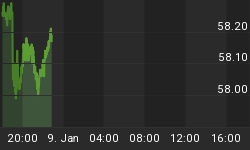Given the recent pullback in the metals, the gold indices, XAU and HUI, and the mining stocks we would like to take a look at some different ways to play the next upleg of the bull market.
First, let's take a view of where we have come from with a few charts of gold, Xau and Hui. The long term uptrends are clearly still in place and we feel that investors must be looking for an entry point not an exit strategy at this particular time.



So, if you believe, as do we, that this is merely a correction, albeit, a violent one, and we are heading back up let's look at some different alternatives.
Many investors might prefer to purchase shares in their favorite mining stocks or the newly traded Gold ETF (Exchange Traded Fund), symbol, GLD. Another excellent choice is to invest in one of the gold mutual funds, i.e., World Precious Minerals Fund, (symbol: UNWPX), part of the US Global Investors family of funds headed up by Frank Holmes.
Investors looking for additional leverage and willing to assume perhaps a higher level of risk might wish to consider investing in call options, leaps or warrants. So let's take a closer look at these alternatives.
Options and leaps actually are traded on the Chicago Board of Trade with options usually having a time period of 30, 60, 90 days or so. These shorter term vehicles, while they offer great upside leverage also come with much greater risk. The holders of call options and leaps have the right, but not the obligation to acquire the underlying common stock or indices at a specific price and expiring on a specific date in the future. With these short term options you must be right on with respect to your timing of the markets and your particular choice of investment vehicles on which to purchase these options.
Leaps offer a longer time horizon perhaps 1 or 2 years but are only offered on a few mining companies, if any. So while we would agree that leaps might represent a good opportunity we find our choices are few and far between. The advantage of leaps, that trade like options and also trade on the Chicago Board of Trade, is with a 1 or 2 year time horizon, this recent 'pullback' would not leave us as investors totally devastated as we should still have time remaining until the leaps expire.
Warrants are unfamiliar to most investors including many newsletter writers, analysts and professional investors so allow us to offer a simple explanation. A warrant is a financial instrument that is issued by a company in connection with a financial arrangement, loan, or IPO. Warrants are usually considered to be an 'equity kicker' or 'sweetener', offered as an incentive to get the deal done. While there are warrants which trade on stocks other than mining and energy companies, warrants are much more popular and plentiful in this sector of the market place. The holder of the warrant has the right, but not the obligation to acquire the underlying common stock at a specific price and expiring on a specific date in the future. Some of the warrants being issued have a life of up to 5 years.
Warrants trade differently than options and leaps. The warrants have a CUSIP number, a legal identification, and are assigned a symbol and will trade very much like the underlying common stock of the company. While it is true that most of the warrants trading on the mining and energy stocks are on Canadian companies these orders are actually executed in the OTC market in the United States making it easy for them to be purchased thru your broker.
Each investor must consider their personal investment time horizons, short-term or long-term in selecting which of these vehicles, if any, to include in their portfolio.
Whether options, leaps or warrants should be included in your investment portfolio is entirely up to you and your broker or investment advisor. The ultimate risk with options, leaps or warrants is exactly the same; if the underlying common stock of the option, leap or warrant is trading below the exercise price on the date of expiration, all of them will be worthless. A total loss is never a good thing.
















